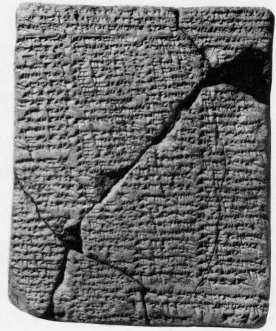Astronomy In Ancient Mesopotamia
 Mesopotamia, the ancient land between the Tigris and Euphrates Rivers (also referred to as the Fertile
Crescent) in what is today Iraq, was far more advanced than many other emerging civilizations of its time. By the year 3000 B.C., the Mesopotamian culture had developed an irrigation system, building methods using clay bricks rather than wood or mud, and a system of writing. Mesopotamia also made explorations in science and mathematics. While much ancient knowledge of astronomy is attributed to the works of Greek astronomers conducted centuries later, the people of Mesopotamia had begun to delve into the oldest of sciences as far back as 4000 B.C. They in turn developed their own astronomical culture and passed it on to the Greeks and eventually to our modern world. Perhaps the greatest legacy to modern western astronomy was left to us by the Babylonians.
Mesopotamia, the ancient land between the Tigris and Euphrates Rivers (also referred to as the Fertile
Crescent) in what is today Iraq, was far more advanced than many other emerging civilizations of its time. By the year 3000 B.C., the Mesopotamian culture had developed an irrigation system, building methods using clay bricks rather than wood or mud, and a system of writing. Mesopotamia also made explorations in science and mathematics. While much ancient knowledge of astronomy is attributed to the works of Greek astronomers conducted centuries later, the people of Mesopotamia had begun to delve into the oldest of sciences as far back as 4000 B.C. They in turn developed their own astronomical culture and passed it on to the Greeks and eventually to our modern world. Perhaps the greatest legacy to modern western astronomy was left to us by the Babylonians.

Babylonian and Assyrian Astronomy
 These early scholars recorded their findings on thousands of clay tablets belonging to both the Babylonian and Assyrian cultures.Much of the data was collected before the era of Nabonassar, the time period which occurred after the destruction of the Assyrian capital city of Nineveh in the Seventh Century B.C. The information found on the clay tablets includes both observations and calculations of the motions of the planets. The Babylonians also predicted certain celestial phenomena, such as eclipses and lunar periods. They began their studies with the eclipse of March 19, 721 B.C..
These early scholars recorded their findings on thousands of clay tablets belonging to both the Babylonian and Assyrian cultures.Much of the data was collected before the era of Nabonassar, the time period which occurred after the destruction of the Assyrian capital city of Nineveh in the Seventh Century B.C. The information found on the clay tablets includes both observations and calculations of the motions of the planets. The Babylonians also predicted certain celestial phenomena, such as eclipses and lunar periods. They began their studies with the eclipse of March 19, 721 B.C..